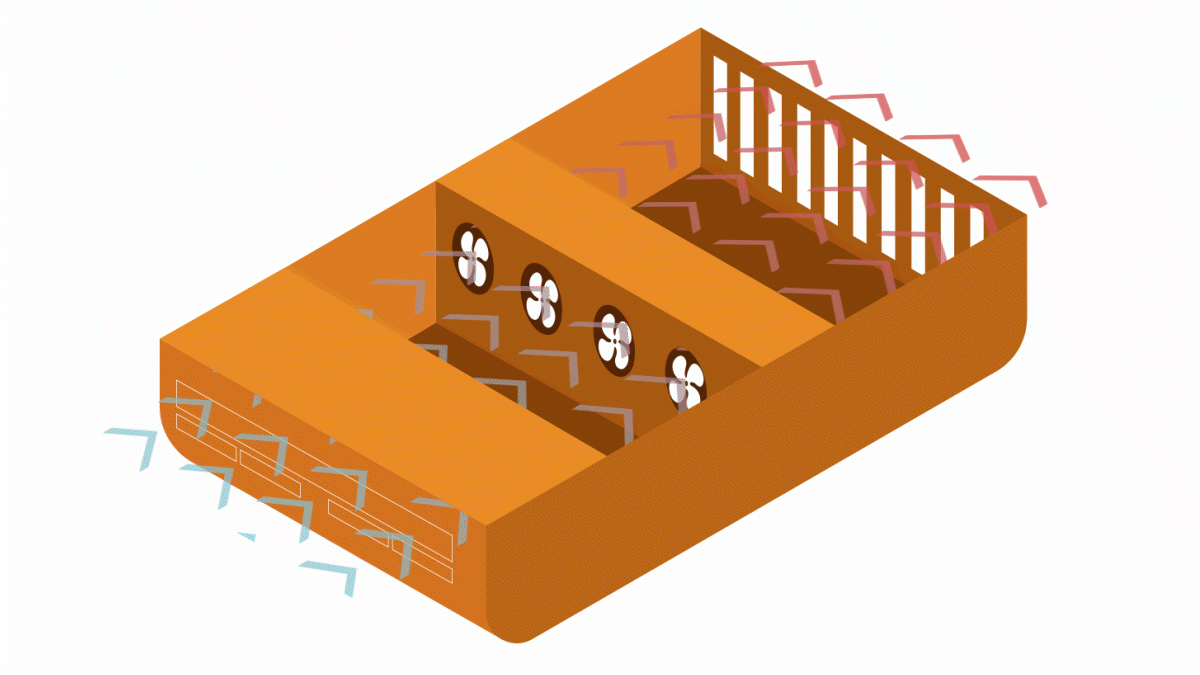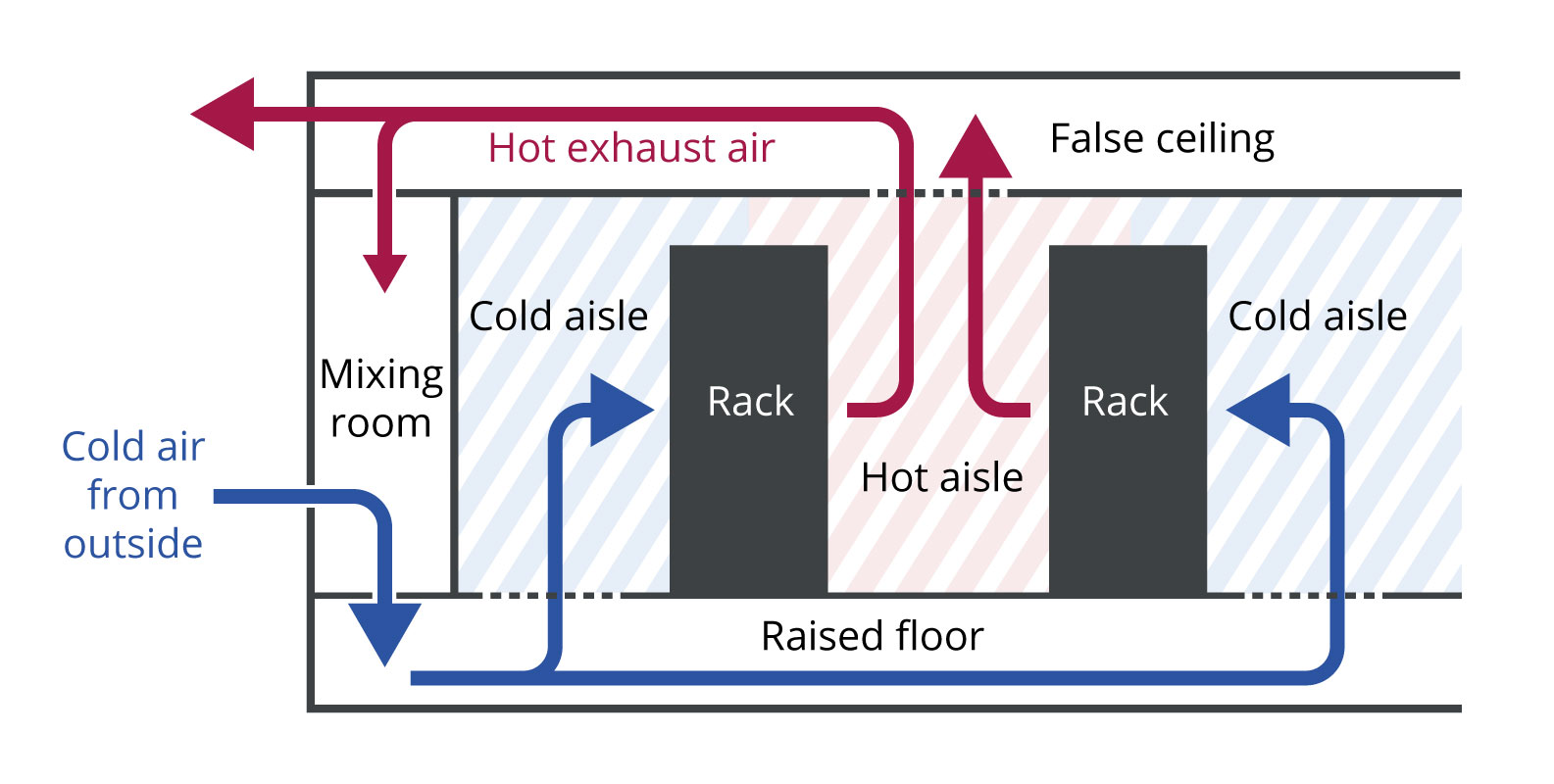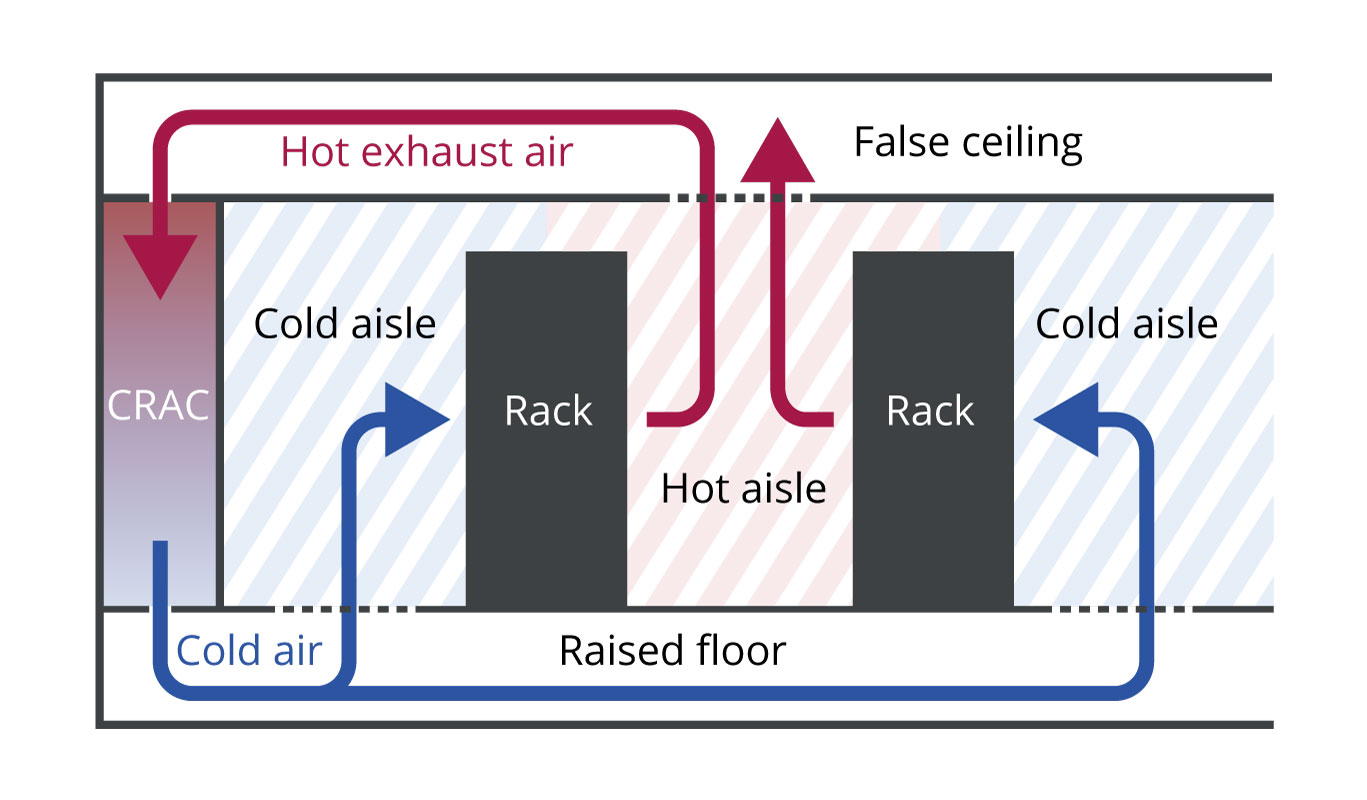AIR COOLING
Air Cooling System: Why Is It Essential for Data Centers?
Data centers are composed essentially of IT components working 24/7 and therefore, generating a considerable amount of heat. This heat is called “fatal heat” and for a great reason: it damages the performance of every component of the data center. Servers need precise environmental conditions to keep functioning and to keep all information stored safe. Cooling solutions are a necessity to regulate the temperature and the humidity levels. The most common used of them is air cooling, also known as air conditioning.
What Is an Air-Cooling System?
Air cooling system uses air tubes to cool the data center. Typically, the racks are separated by hot and cold corridors.
Air enters the cold corridor and passes through the front of the equipment. The same air is sent to the back of the cabinet where it comes out warm, and then is sent back to the tubes.

How Does Air Cooling Work?
2 Types of Air Conditioning Solutions
Server-Level Air Cooling
Server-level air cooling is a method used for data centers consuming up to 10 kW per rack. The cooling is done by fans implanted inside the server to cool the components producing the most heat such as CPU or GPU.
Rack-Level Air Cooling
All the fans are aggregated at the rear of the rack, creating a fan wall . The monitoring of the power distribution is easier and allows smart control of the fans. According to our own data, power consumption was reduced by 23% comparing to traditional methods, such as server-level. Concentering fans at the rack-level is ideal for facility consuming 18 to 20 kW per rack.
How Does the Air Flow Works in A Data Center with Air Cooling?
Free cooling
Free cooling system principle is rather simple: it uses the air from outside an infrastructure, such as a data center, to power the cooling system. However, this method crucially depends on the weather. This cooling method is used in chilled or cold environments to be able to cool the ambient air inside the datacenter.
Free cooling is an approach to lowering the air temperature in a building or data center by using naturally cool air or water instead of mechanical refrigeration. In practice, free cooling is not entirely cost-free, as pumps, fans, and other air and water handling equipment are required, and this equipment also needs periodic repair and maintenance. In addition, depending on the location, free cooling might need help from air conditioning systems to reduce the temperature of the ambient air. This is mostly the case in summer, provided the data center is not collocated in all-year cold environments.
In certain places, the ambient air can be considerably colder than the air heated by the data center equipment. By filtering, humidifying, and introducing cooler ambient air directly into the data center, the use of industrial grade computer room air conditioning (CRAC) systems can be reduced or eliminated.
Companies can be saving up to 80% on energy costs and reduce the environmental impact .
Cold or Hot Aisle Air Containment
In most data centers nowadays, room-based cooling uses cold-aisle/hot-aisle orientation to direct airflow which provides maximum efficiency.
Hot-aisle containment (HAC) system: fatal heat coming from racks is pulled into a ceiling extract hot air coming from rack enclosures, pull it up into a ceiling chamber where pipes send it to a cooling unit, then back into the room as cooled air.
Cold-aisle containment (CAC) system: distributes cold air to IT equipment. This system is picking up heat as it passes through the components, out the back and into the hot aisle, rising through the hot aisle or into ceiling chamber, returning to the CRAC unit and back into the floor.

2CRSi’s Air Cooling Servers
2CRSi’s air cooling solution has been optimized to be effective for data centers consuming up to 20 kW per rack. If your field of activity resolves around life science, defense and government administration, research and education or industries, the OCtoPus 21” server is the solution for compute, storage, and network needs. Created in 2017 while 2CRSi was looking for a way to improve the efficiency of a stand OCP cluster.


